11Hacks Data Analysis: Argentina and Brazil lead the numbers going into the World Cup

Brazil
The fact that Real Madrid winger Vinicius Junior (22) is absent from most of the expected starting line-ups for Brazil's opening game against Serbia is proof enough of the strength and depth of this ultra-offensive and talented squad.
In this calendar year, the Brazilians have played eight games, scoring 26 goals. What's more, in those games they have recorded 24.9 expected goals (xG), or 3.11 per game.
The frequency with which they threaten their opponent's goal is unprecedented in contemporary football. For comparison - in the Premier League so far in the current season, Liverpool average 1.9 xG per game while Manchester City and Arsenal are level with 1.85.
This Brazilian team does not simply rely on Neymar (30) and the other offensive players, however. Casemiro (30), for example, one of the best defensive midfielders in the world, is absolutely key to their success and performance.
When United paid a staggering 70.65 million euros for Casemiro in August, they were primarily investing in what was seen to be an instant improvement to the side. And that's exactly what they got. Once the former Real player had gained the necessary fitness, he began to dominate in the world's most competitive league statistically.
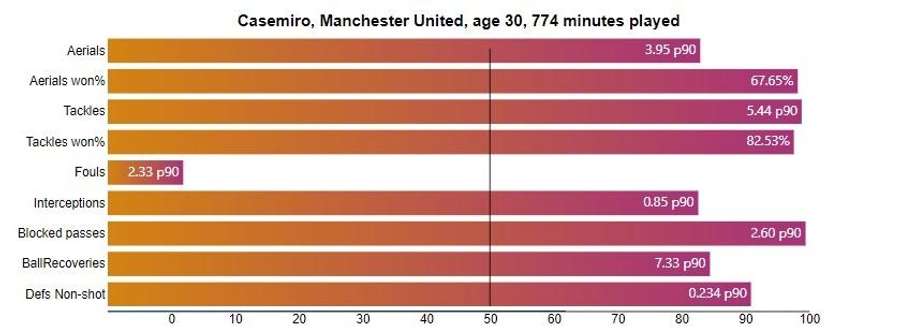
The above chart shows how Casemiro is performing in selected defensive metrics. His numbers and percentages are listed in each corresponding row. The x-axis shows the percentiles he falls into for each. That is, his relative rankings to other players evaluated.
To explain this further - a percentile of 90 means a player is better than 90% of all players in his position. In other words, he ranks in the top 10%.
According to the above stats, you can see that Casemiro wins the ball more than five times per game and, when he tackles, he dispossesses his opponent four times out of five attempts.
In the pre-Casemiro era, United had the league's 13th-best defence with an average of 1.51 expected goals conceded per game.
In the period from round nine to round 16 this season, when the Brazilian started all those games, only Arsenal and Brighton recorded better defensive stats.
From 1.51 expected goals conceded, United improved to 0.79. It should be taken into account that in the opening nine duels they had a slightly tougher set of matches, but even so, Casemiro faced the offensives of Newcastle, Chelsea, Tottenham and West Ham in that period. His defensive contribution is undeniable and the numbers show this, too.
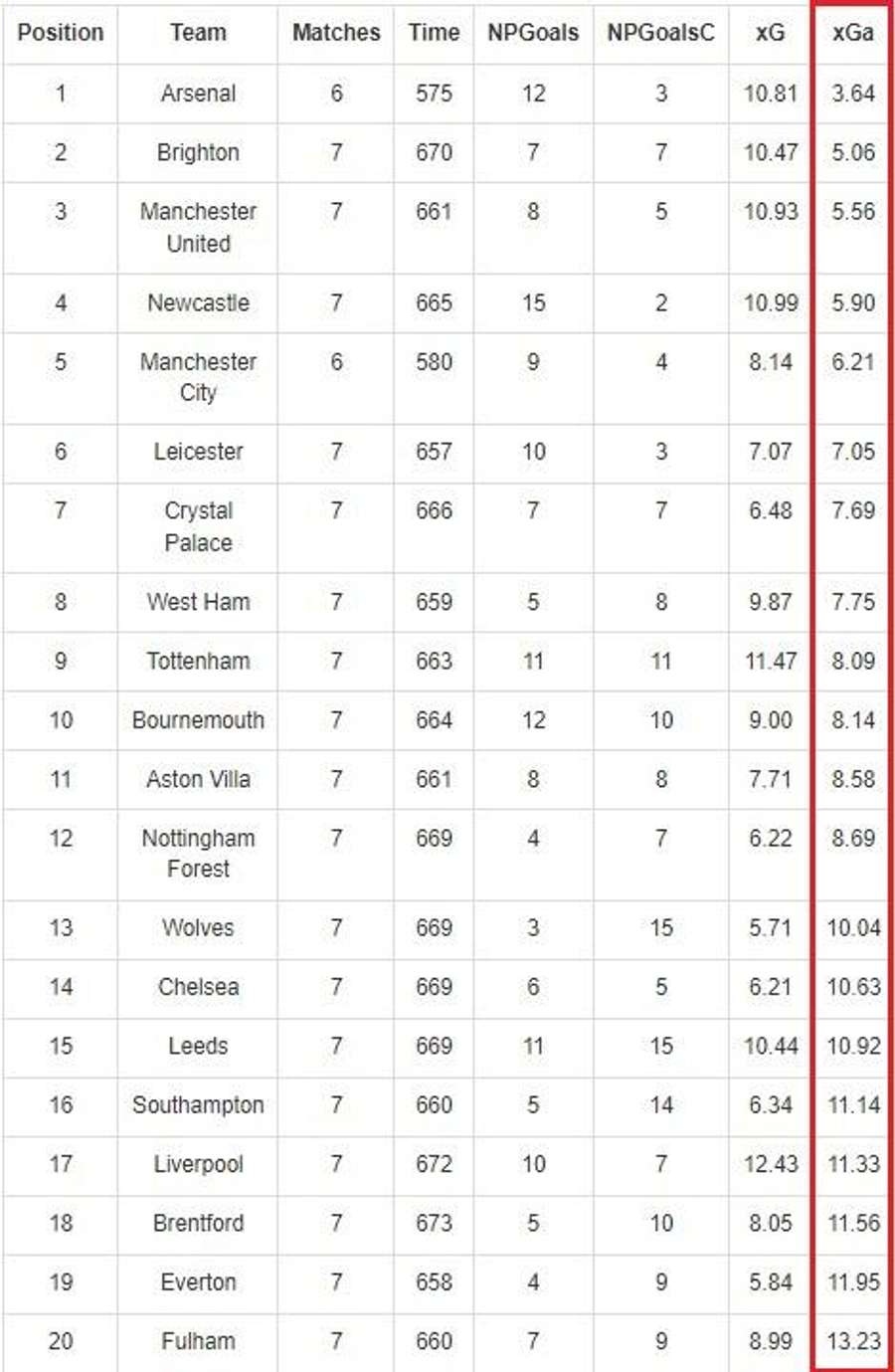
Aside from the master midfielder, Brazil Coach Tite also has one of the best goalkeepers in the world at his disposal. Alisson Becker (30) has long ranked among the elite in the vast majority of metrics that are used to rate goalkeepers.
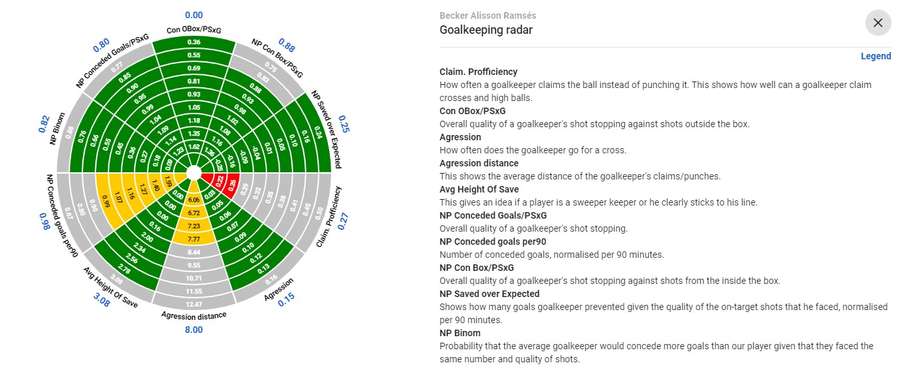
If the defence allows an opponent a breakaway situation, they can count on the fact that there is no better goalie around than Alisson in one-on-one battles.
Analysis by goalkeeping expert John Harrison - who 11Hacks have worked closely with - showed that he notched 7.79 saves above average in these situations during the 2021/22 season. By a wide margin, that's the most of any Premier League goalkeeper last season.

Argentina
Oversimplification holds no place in football analytics, however, we stand by the fact that Lionel Messi (35) is still the best player on the planet.
One of our most complex models is called goal probability added, or value added per goal (GPA+). This model tracks all of a player's touches on the ball and measures how much they increase his team's chances of scoring.
GPA+ can be tracked for passing and dribbling at the same time, split into both activities separately or mapped onto how a player performs in these activities in specific thirds of the field.
A GPA+ index of 16.22 is sufficient to rank in the top 5% of players in Messi's position, but Messi's GPA+ is an unprecedented 48.12. Quite incredible.
The following pair of 2D visualisations show the GPA+ values on the y-axis (vertical) and the expected assists and expected goals values (respectively) on the x-axis (horizontal). They show stats from Ligue 1 in France.
Expected assists tell us how many quality chances a player directly creates for his teammates. Expected goals tell us what quality of positions he gets himself in to score.
Only Kylian Mbappe (23) is better in that first metric mentioned and only Lois Openda (22) is superior in the second. There is no more versatile and useful player in Ligue 1 than Messi considering these numbers.
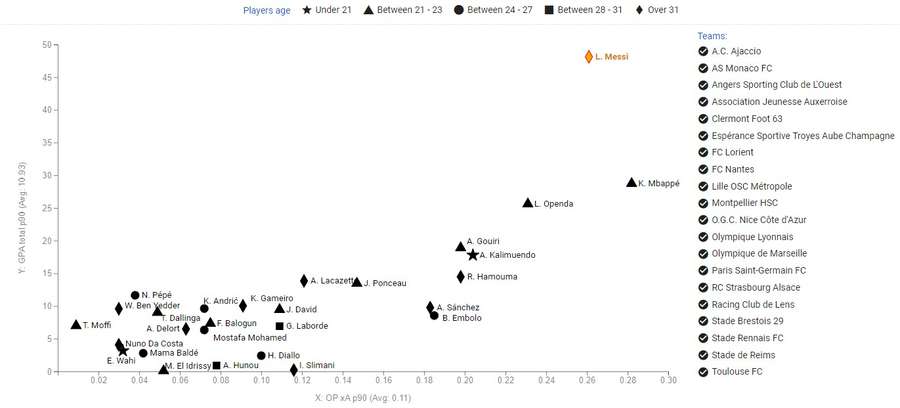

A certain parallel that exists between Argentina and Brazil is the presence of a key defensive midfielder who is shining in the Premier League. In the case of Argentina, that man is Alexis Mac Allister (23).
Mac Allister's form at the base of midfield would have been hard to imagine just two years ago when he was starting in a number ten role for Brighton. However, former manager Graham Potter converted him into one of the Premier League's top-holding midfielders.
We're not so sure if he will perform the same function for his national team as he does under his employer, but having such a versatile player in the squad gives Lionel Scaloni more tactical options.
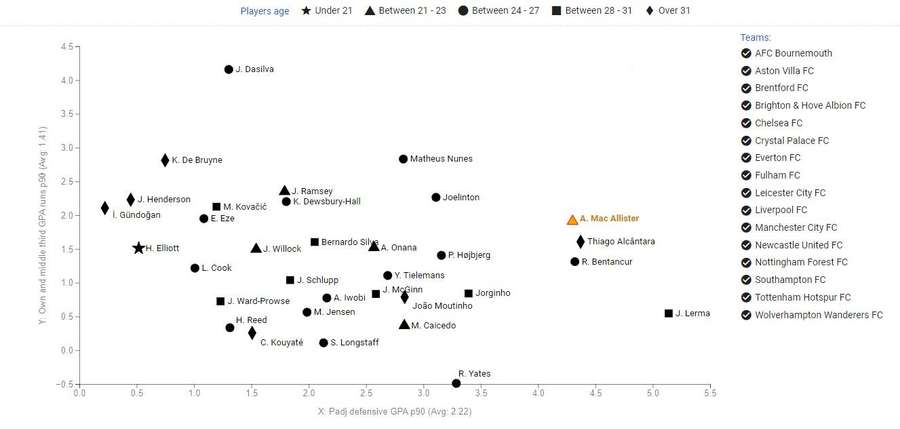
Mac Allister demonstrates great numbers in a metric that measures how many threatening areas a player gets the ball in to prevent opponents from creating quality chances (x-axis).
He operates at the same level as Liverpool's Thiago Alcantara (31) and Tottenham's Rodrigo Bentancur (25) in this regard.
On top of this, he often moves the ball into more valuable areas of the pitch with his runs and dribbling (as seen on the y-axis).
Another parallel to be drawn with Brazil is between the posts where Argentina's reliable keeper Emiliano Martinez (30) adds a calmness to the team and in front of him stands a highly disciplined and functional back four.
When Argentina faced Italy in June in the Finalissima, the winners of the continental championships of the two strongest federations, UEFA and CONMEBOL, it was a one-sided affair. Argentina won 3-0.
In that game, Argentina racked up 2.6 xG, while the Italians, playing their strongest line-up possible, managed only 0.36 xG and just a single shot from inside the box.
Brazil produced just 0.85 xG in last year's Copa America final (against the Argentines) and only 0.43 xG in November's World Cup qualifier against them.
All this goes to show that Argentina is a well-balanced side that perhaps have the edge over Brazil in recent times and will have their eyes firmly on the trophy in Qatar.
